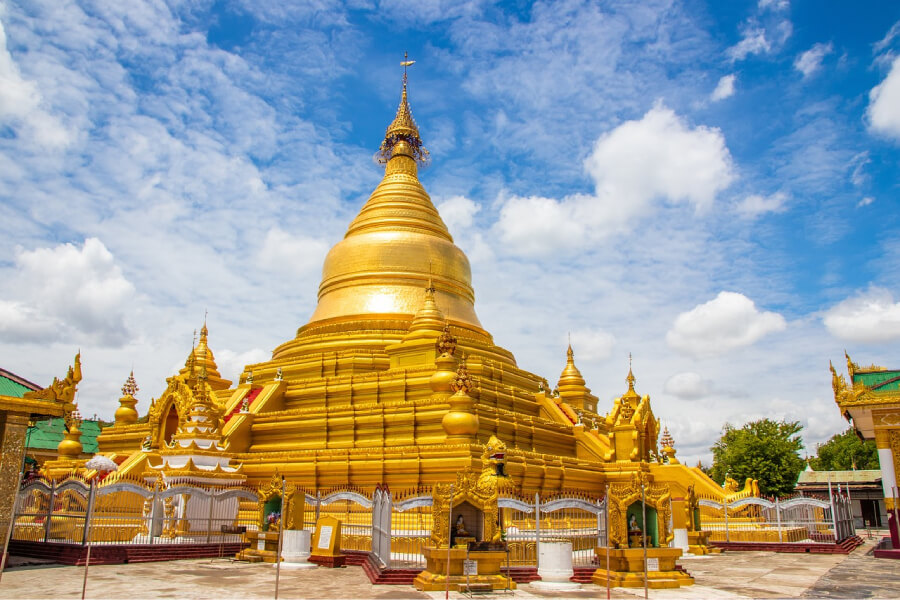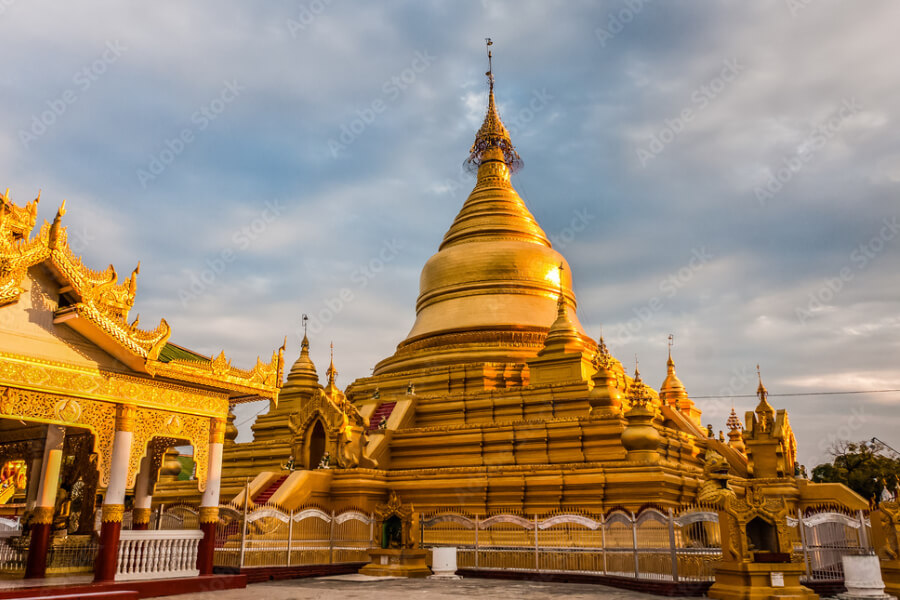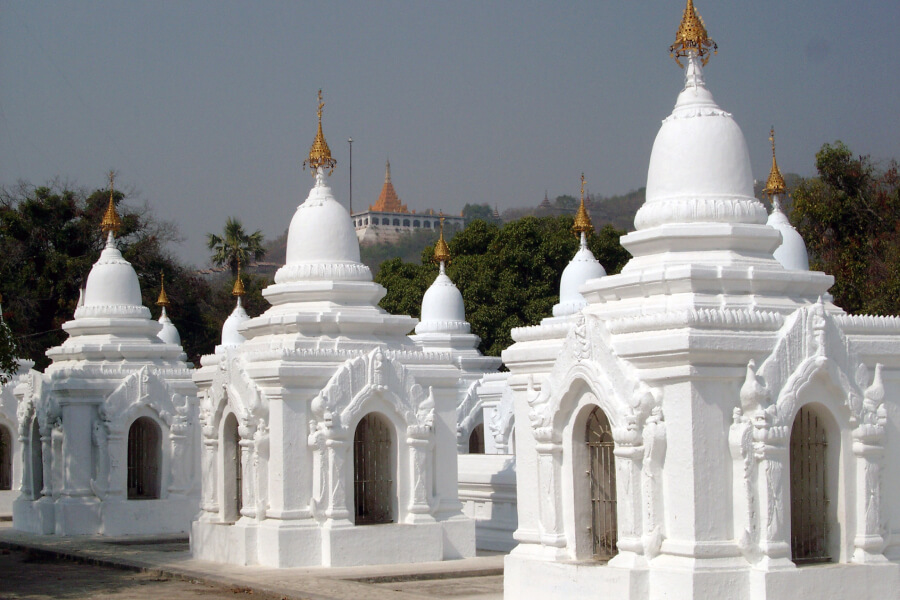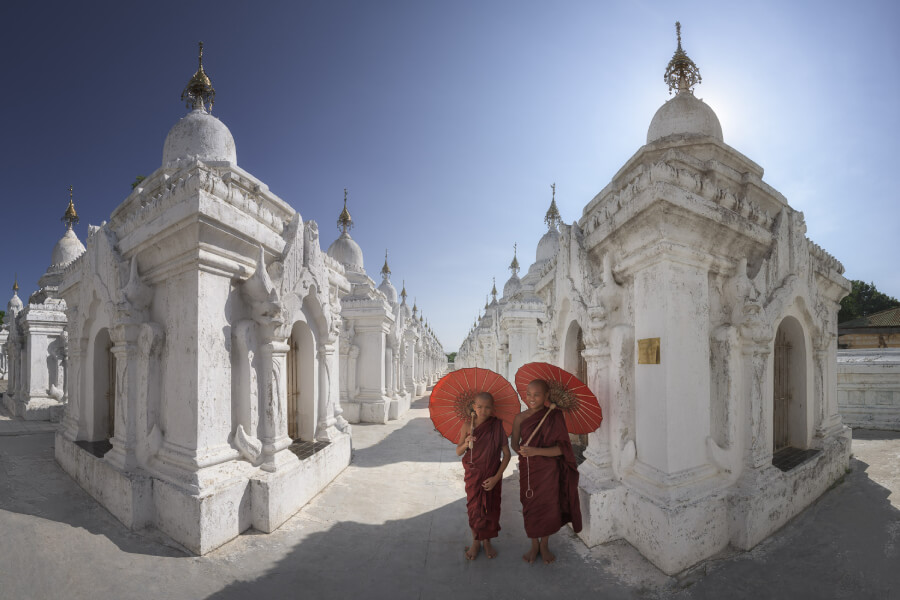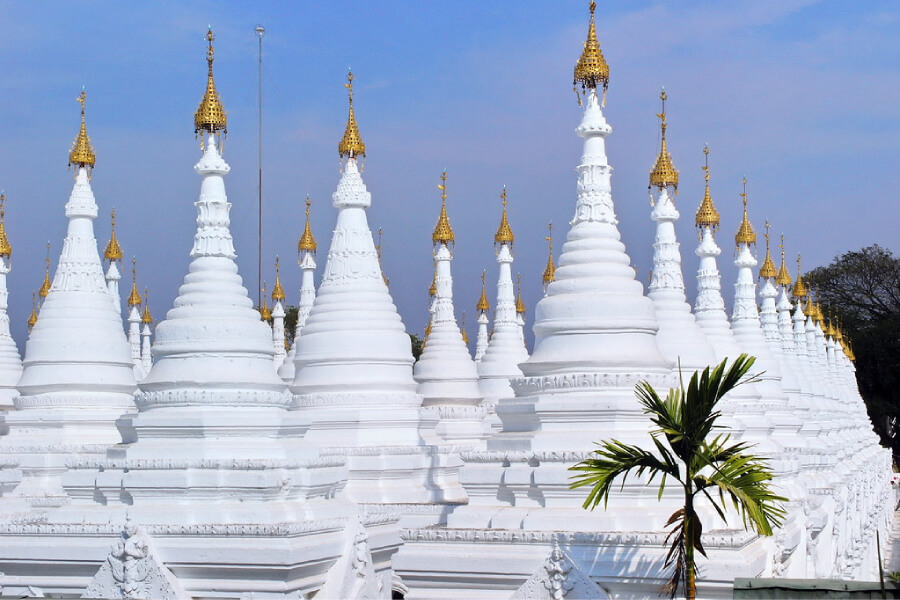Prepare to be enthralled as we delve into the heart of Mandalay, Myanmar, where the awe-inspiring Kuthodaw Pagoda awaits. This architectural marvel not only carries immense spiritual significance but also boasts a unique distinction setting it apart from sacred sites worldwide. Known as the "World's Largest Book," the Kuthodaw Pagoda promises exceptional experiences for visitors on Myanmar tours.
A Monument of Divine Wisdom - The Kuthodaw Pagoda's Enigmatic Legacy
Within the enchanting realms of Myanmar, when you embark on captivating Myanmar packages, a splendid historical jewel awaits discovery right at the heart of Mandalay - the Kuthodaw Pagoda. This architectural masterpiece, a symbol of grandeur and spiritual reverence, is also the guardian of Myanmar's rich cultural heritage.
The story of Kuthodaw Pagoda transcends to the 19th century, during the reign of King Mindon, a devoted patron of Buddhism. Acknowledging the timeless importance of preserving the Theravada Buddhist Canon, or Tripitaka, King Mindon initiated the construction of this grand pagoda, accompanied by the meticulous inscription of marble slabs housing the sacred Pali Canon. This monumental undertaking, spanning several years, involved artisans meticulously engraving the sacred texts by hand.
The Kuthodaw Pagoda extends beyond its role as an architectural marvel; it embodies the very essence of Myanmar's cultural heritage and spiritual devotion. Its enduring presence serves as a profound symbol of the nation's unwavering commitment to safeguarding and passing on the teachings of Gautama Buddha to future generations.
Kuthodaw Pagoda - A Tapestry of Monumental Splendor
Firstly, the architectural magnificence of the Kuthodaw Pagoda serves as a profound symbol of spirituality and cultural identity. The central stupa, gleaming in gold and white, radiates a sense of divinity, representing the heart of the pagoda's spiritual significance. It stands as a visual testament to Myanmar's deeply rooted devotion to Buddhism and the teachings of Gautama Buddha. Moreover, the 729 smaller stupas encircling the central one symbolize the importance of preserving sacred knowledge for future generations. Each stupa, meticulously designed to house a marble slab inscribed with sacred scriptures, is a reminder of the role culture plays in perpetuating spiritual heritage.
The painstaking craftsmanship that adorns each marble slab is not just a display of technical skill but a manifestation of unwavering devotion. The artisans who delicately hand-inscribed the sacred Pali Canon scriptures dedicated themselves to a spiritual task of monumental significance. Their commitment to preserving these ancient texts demonstrates a profound sense of spirituality that transcends the act of inscription. It is an act of devotion, a prayer in itself, that breathes life into the inanimate marble. Each character and word is not merely an inscription but a manifestation of profound wisdom, representing the spiritual dedication at the very heart of the pagoda.
Secondly, the tranquility that envelopes this place is not just silence; it's a symphony of ages gone by. The inscriptions etched in marble aren't just words; they're echoes of wisdom passed down through generations. Here, culture doesn't reside in dusty books; it thrives in every carved character, in every meticulously inscribed word. It's a living testament to the enduring connection between culture and spirituality, offering you an immersive experience that transcends the boundaries of a typical cultural visit.
A Timeless Legacy
Finally, the Kuthodaw Pagoda is not just an architectural marvel; it's a repository of Myanmar's rich cultural and spiritual heritage. Visiting this iconic site is not a tourist experience but an opportunity to connect with the enduring legacy of a nation. It's a journey that transcends time, connecting you with a profound cultural and spiritual tapestry that leaves an indelible mark on the heart and mind of those who explore its depths.
Practical Information for Your Kuthodaw Pagoda Visit
Opening Hours: The pagoda typically opens its doors to visitors from 8:00 AM until 8:00 PM.
Dress Code and Respectful Behavior: Myanmar, like many Southeast Asian countries, has a conservative dress code for religious sites. To show respect, both men and women should cover their shoulders and knees. It's also customary to remove your shoes before entering the main pagoda complex.
Photography: While photography is allowed, it's crucial to be respectful when taking pictures within the pagoda premises. Some areas may have restrictions, so always follow the guidance of on-site staff.
Timing Your Visit: Mandalay's weather can be quite hot, so it's advisable to plan your visit during the cooler morning or late afternoon hours. This will make your exploration more comfortable and enjoyable.
Souvenirs and Local Cuisine: Don't forget to explore the local markets and shops surrounding the Kuthodaw Pagoda, where you can find souvenirs, crafts, and try traditional Burmese cuisine to complete your cultural experience.

